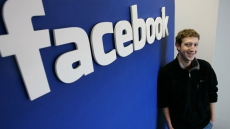TORONTO — Attention BlackBerry Curve and Bold users: BlackBerry wants you to ditch your ancient phone and upgrade to something familiar yet new.
With the new BlackBerry Classic, the Waterloo, Ont.-based company is targeting the "millions and millions" of loyal customers still clinging onto their antiquated, not-quite-smart phones.
The beleaguered company has already said it no longer intends to compete with Apple and Android phone-makers in the increasingly cutthroat consumer smartphone market.
It has now turned its attention to corporate customers, and with the Classic, is being even more specific in honing in on BlackBerry users who have had their old, outdated phones for way too long.
The Classic was designed to be the spitting image of the Bold 9900, which was released in 2011, already a couple of years into BlackBerry's staggering decline.
The Bold was competing against the likes of the iPhone 4S and the Samsung Galaxy S II. While it couldn't turn the company around, the phone did have its fans. Kim Kardashian recently made headlines for proclaiming it was still her phone of choice. She said she's been buying backups on eBay because she can't imagine living without it.
BlackBerry bills the Classic as being like a Bold but modernized, with better hardware and software. The 3.5-inch screen is 60 per cent larger than the Bold 9900's display and BlackBerry claims the battery lasts 50 per cent longer than the old Bold's.
The Classic runs the BlackBerry 10 operating system, which befuddled many longtime BlackBerry users when the new software was launched last year.
BlackBerry has conceded that some of its hardcore users simply aren't up for trying to learn the swiping gestures used to navigate BlackBerry 10.
So the company has brought back the trackpad and top row of keyboard keys that were familiar to Bold users but nixed in the design of the Q10 keyboard-based phone.
"(BlackBerry 10) was too different," admits Michael Clewley, director of handheld software product management.
One of the keys allows users to go back to the home screen without having to use a swipe gesture.
"If the user is starting to feel a little bit lost ... they have the escape parachute to get back to the home screen," Clewley says.
BlackBerry is hoping the confusing-to-some gesture system was the reason the Q10 wasn't largely adopted by old Bold users.
Outside of the trackpad, new keyboard keys, and a slightly larger screen, there's not much of an upgrade between the Q10 and the Classic.
But the Classic is certainly a huge leap forward compared to an old Curve or Bold.
It has a web browser that actually works with virtually any website, access to far more apps — although still just a tiny number compared to what's available on other platforms — and most importantly, a keyboard that makes typing emails a breeze.
There's still a bit of a learning curve to adjust to BlackBerry 10 but there's a tutorial that users are guided through when they first turn on the phone.
If the Classic can't convince BlackBerry stalwarts to finally upgrade their old phone, perhaps nothing will.
The Classic will be available starting Wednesday for $50 with a two-year contract or $499 unlocked directly from BlackBerry.





